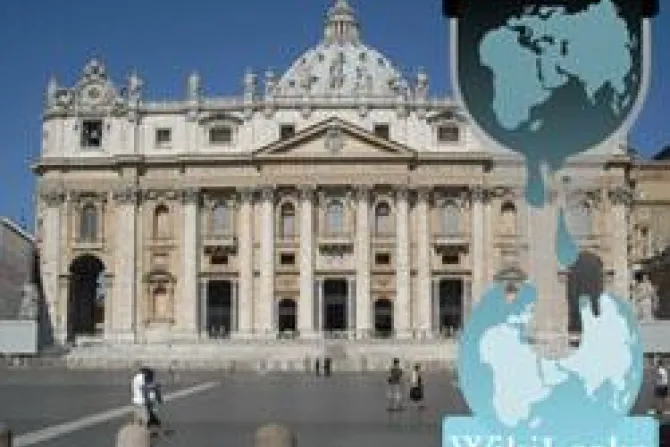Vatican City, Sep 6, 2011 / 14:45 pm
A WikiLeaks release of leaked State Department cables has drawn criticism for exposing sensitive diplomatic information. However, the massive release did not reveal confidential Vatican phone numbers but contained information already available in the city state’s public directory.
A December 27, 2004 unclassified cable from the U.S. Embassy at the Vatican contained contact information for figures in the Vatican government. It included numbers for the papal office and residence and for the residence of then-Secretary of State Cardinal Angelo Sodano.
The number for the papal office reaches the Prefecture of the Pontifical Household, the office which maintains the Apostolic Palace and organizes events such as the general audiences. The phone number listed for the papal residence is in fact a direct line only to the Vatican’s telephone operators, who are religious sisters.
The 2004 phone number for Cardinal Sodano’s residence is still the same and a call to it reaches his secretary. He resigned as Secretariat of State in 2006 and is now Dean of the Colleges of Cardinals.
The BBC noted the release of the telephone numbers of “key figures at the Vatican” in a Sept. 2 report on worries the WikiLeaks cables could put sources at risk. However, the Vatican’s telephone directory lists the phone numbers of the same offices and residences. The directory can be purchased in a bookstore near St. Peter’s Square.
The State Department cable also listed the residences of then-Secretary for Relations with States Archbishop Giovanni Lajolo and then-Substitute for General Affairs Archbishop Leonardo Sandri.
Their home numbers have since changed. Calls made to their offices listed in the WikiLeaks cable go directly to a receptionist at the Secretariat of State.
WikiLeaks’ founder Julian Assange decided to release over 250,000 State Department cables in unredacted form on Aug. 30 after a journalist for the British newspaper The Guardian—a WikiLeaks media partner—published the password to the cables in his book. Previously, the watchdog organization and its major media partners had been redacting names of sensitive U.S. personnel and contacts.
According to The Guardian, the archive contained several thousand files marked “strictly protect”—an indication that U.S. officials thought sources could be endangered if the information was public.
Some files also name victims of sex offenses, victims of government persecution and the locations of sensitive government installations.
The Guardian, El Pais, New York Times and Der Spiegel in a joint statement said they “deplore” the decision to publish the unredacted cables.
"We cannot defend the needless publication of the complete data - indeed, we are united in condemning it,” the WikiLeaks partners said.
A December 2010 CNA analysis of preliminary cable data found that more than 800 involved the Vatican. Many of the cables concerned human rights and religious freedom issues, while more than 50 involved intelligence issues and another five involved national security concerns.
WikiLeaks has since released other diplomatic cables about the Catholic Church in countries like Cuba, Vietnam and Venezuela.




